Even with the best intentions, paper clutter sneaks up on us. One week, the pile is small enough to slip into a drawer, and before you know it, it’s an entire shelf of unopened mail, bills, and random papers you don’t even remember bringing home. The truth is, most of us don’t have a proper filing system for home, and that’s why paperwork becomes overwhelming so quickly.
But setting up a filing system doesn’t need to be complicated. In fact, it should be simple, clear, and easy to maintain. The right system won’t just help you find what you need faster. It will also reduce stress, prevent you from losing important documents, and give you the relief that your admin life is under control.

-
Save
Why you need a filing system for home
The first goal of a good home filing system is to save time, nerves, and a few frantic searches through drawers. When your papers have a place, you can find what you need in seconds: whether they are tax forms, medical documents, warranties, or that one receipt you need for a return, you’ve got it!
It also helps others help you. If something happens and you can’t take care of paperwork yourself, your loved ones will know exactly where to find the important stuff. And let’s not forget the simple peace of mind that comes from knowing you won’t lose or accidentally toss something essential.

-
Save
The basic principles of your filing system
The best filing systems are the simplest ones. Keep only what you need and let go of the rest. No one needs every bill from the past ten years or old flyers from an appliance that broke long ago.
I’ve learned from experience that when choosing the different categories, they must be clear and not overlap. If a document could fit in more than one folder, that’s a sign your system might be too complicated. Instead, keep it obvious. Then, maintaining it regularly will help prevent buildup.
And a last tip: the papers you tossed could be used for identity theft. To avoid that, I prefer to take a little time to shred anything containing personal or financial information. That’s one of these situations where safe is definitely better than sorry.

-
Save
Organizing mail at home
Mail is often the first step in the paper chaos. To stop it from piling up, you only need a simple rhythm. Here is mine.
Each day, I sort the mail as soon as it comes in: I toss flyers and ads immediately, open the rest, and set aside anything that needs attention in a small “to-deal-with” pile.
Once a week, I go through that pile. I pay bills, reply when needed, and move what I still need to keep into a “to-file” pile.
Once a month, I file what’s left. It doesn’t take long, but doing it regularly keeps papers under control, and I love seeing that both piles have disappeared.
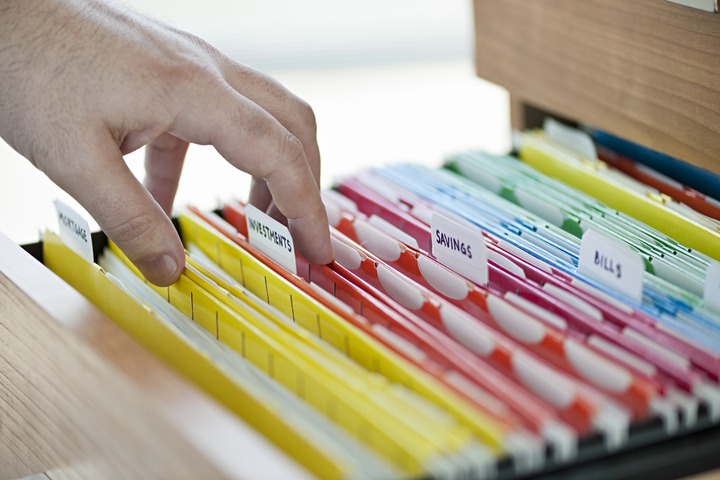
-
Save
Define your home filing system categories
You don’t need dozens of folders, just a few solid ones that cover the essentials. For most homes, categories like home and utilities, health, money (including taxes and bank papers), family and kids, insurance, and bills are enough.
A last section that will help you is for the “important documents”. Here you’ll gather birth certificates, passports, and title deeds. The goal is to make your future self’s life easier, not to create more work by overthinking it.
-
Save
Paper decluttering for a lasting filing system
Before you start filing, you should declutter your papers. There’s no point in organizing what doesn’t need to be kept. What to keep depends on where you live, so instead of guessing or asking AI (trust me, they still make mistakes sometimes, and it could be a costly one!), Google “papers to keep” plus your country and check official sources. It’s the safest way to know how long to keep tax, health, or banking documents.
When you declutter, go pile by pile. You don’t need to spend hours at once, fifteen minutes is enough to make progress. Once you’re done, shred what’s personal and recycle what’s not. If you have time, an optional last step is to organize each category chronologically. You’ll thank yourself the next time you search for that bill from last September.
If you need to stop before filing everything, no need to leave a paper disaster behind you. In that case, I make neat piles for each category and stack them by turning each one a quarter turn from the last. This keeps them separate without taking up too much space. Another solution is to fold a sheet of paper around each pile and write the category name on it. Then, you can pile them up. It’s tidy and easy to spot later.
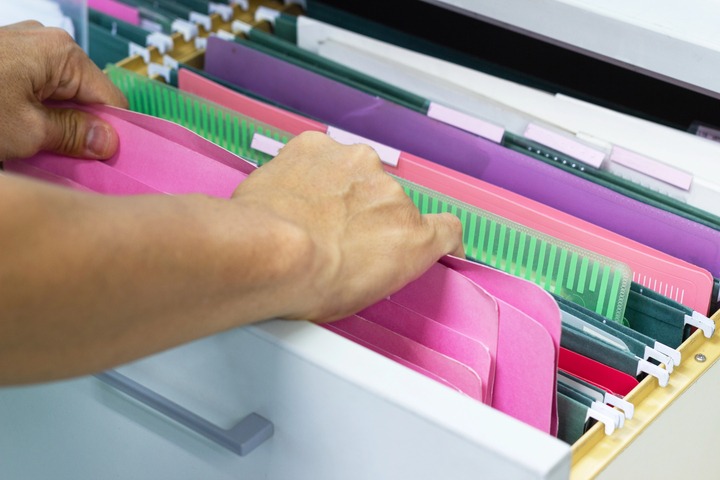
-
Save
Keeping your paperwork organized
A filing system isn’t something you set up once and forget. It’s meant to evolve with your life. Once a year, take time to remove papers you no longer need: old bills, outdated contracts, or manuals for things you don’t own anymore.
It’s also a good time to check that a category hasn’t become so big that you can’t find anything. If it happens, you can often find the subcategories easily. For example, if your money folder grows too much, you can create 2 smaller ones for the taxes and bank papers.

-
Save
Creating and maintaining a filing system for home doesn’t have to be complicated
You don’t need to turn into a paperwork perfectionist to stay organized.
A simple, functional filing system that you actually use is far better than a complicated one that gathers dust. Once your papers are under control, your home will feel calmer, and so will your mind. Remember, baby steps are still important when sorting through stacks of papers. Even 15 minutes wouldn’t be lost! Then, try to go through mail regularly (at least before starting a second pile!. It will help you avoid paper clutter from crawling back.
Paper clutter often goes hand-in-hand with an untidy desk. Do you want more help keeping your office or desk clutter-free? I’ve got a post on how to tidy up a messy office!

-
Save
Share via:

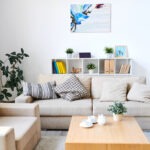

Be the first to leave a comment